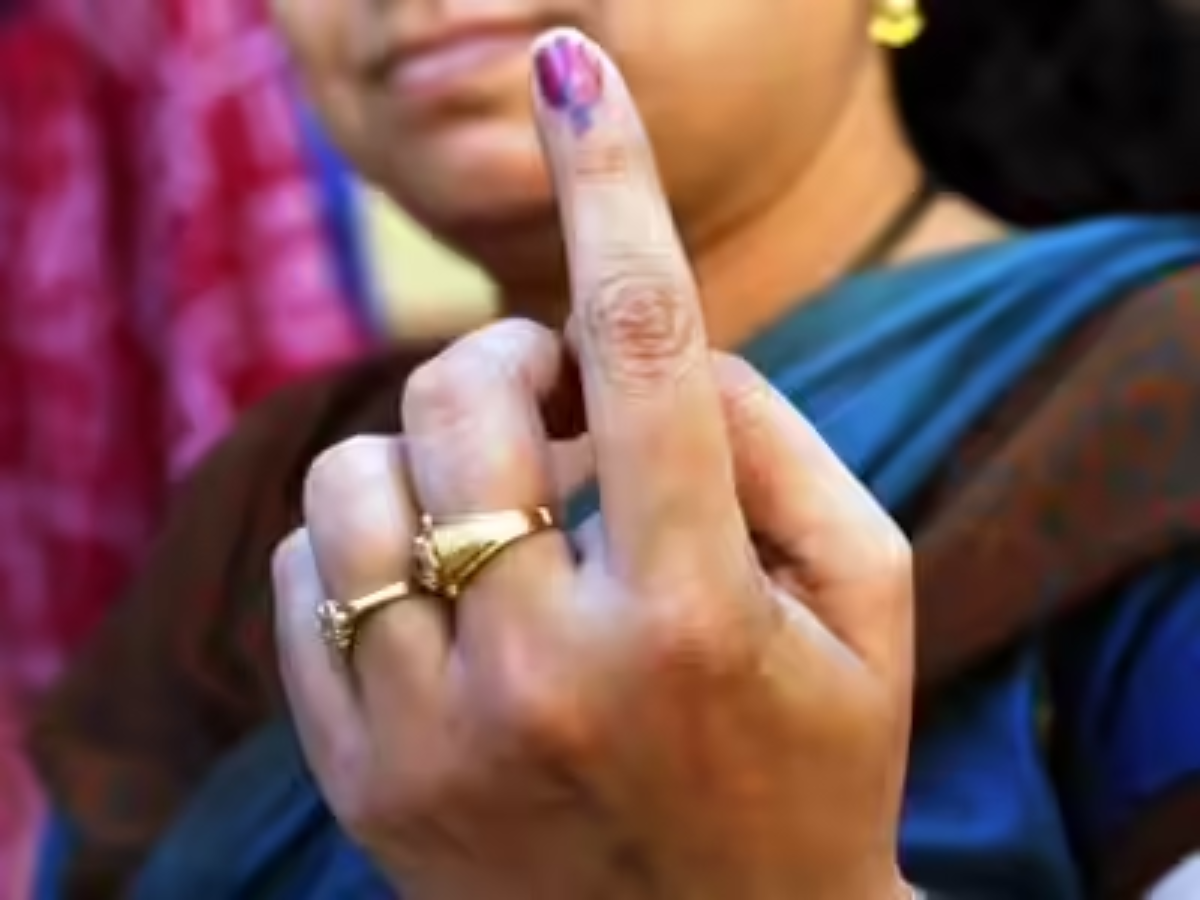What makes you think that Why, Bihar Chief Minister – Nitish Kumar is sitting strong on the throne since 2015?
His dedication towards the state? Or the development in Bihar? Well ! the answer might hurt a progressive reader but the fact is that it is CASTEISM.
However, this also stands still that the state- Bihar produces the highest number of IAS and IPS officers in the country (which means that the people of the state believes in education and development) but at the same time, it is the caste which is deeply involved in the politics of Bihar.
A well lyrical song from a OTT series on Netflix- Khakee says-
(Thok denge katta kapar me , aaiye na humra Bihar mein…(We’ll shoot you in the head with a pistol, come visit our Bihar)).
If you haven’t heard it listen in here:
This is not just a song, it is a reality of Bihar.
Since 1990s, the emergence of a well known politician from Bihar – Lalu Yadav changed the landscape of the state- politically. He played a key role in building support base among the Yadavs and Muslims, forming the famous MY (Muslim-Yadav) coalition. His rise came after the Mandal Commission recommendations, which introduced reservations for Other Backward Classes (OBCs) in government jobs.
Lalu openly championed backward caste pride and challenged upper caste dominance. He famously said, “Aabey Raja nahi, ab gareeb raj karega” (Now the poor will rule, not the kings). Lalu Yadab ruled the state for 15 consecutive years which is definitely not a matter of joke.
FACT: Elections in Bihar mostly focus on local caste equations and development issues. For once development can suffer but not the bond of castes. Lalu’s emergence sidelined Congress. They just couldn’t keep up with the whole social justice wave caste politics was blowing up, and Congress was busy pretending it was still 1985. Lalu Prasad Yadav swooped in like a total game-changer, hyping up the Mandal Commission and giving OBCs and Muslims a real political home.
Congress? Still clinging to its old-school “we’re for everyone” shtick while the ground was literally shifting under their feet.
Upper castes bailed out, ran straight to the BJP. OBCs and a whole bunch of others? Off to Lalu’s RJD or JD(U). By the time the 2000s rolled around, Congress was just… there. Like, technically present, but totally out of the loop in Bihar’s wild, caste-driven circus.
Too Much Confident: Lalu Yadav’s Reign Collapsed, But How ?
Lalu Yadav’s political collapse in Bihar stemmed from a combination of corruption scandals, governance failures, and changing caste dynamics. Though he rose to power in the 1990s as a champion of social justice for Other Backward Classes (OBCs) and Muslims, his long tenure saw growing disillusionment. The fodder scam, which led to his conviction, severely damaged his credibility. Under his rule and later during his wife Rabri Devi’s tenure, the state was widely criticized for poor law and order, unemployment, and lack of development leading to the label “Jungle Raj.”
By the mid-2000s, voters especially youth and women began seeking stability and growth, which Nitish Kumar successfully offered with his governance-focused model. Lalu’s traditional MY (Muslim-Yadav) base also saw erosion as other backward castes aligned with newer political alternatives. His failure to modernize the RJD or groom a strong leadership pipeline beyond his family further weakened his hold. While Lalu remained a symbolic force, his practical influence in Bihar politics declined sharply post-2010.
The Emergence Of Nitish Kumar, Promise Of Development
Back in 2005, Nitish Kumar basically flipped the script on Lalu. With the BJP in his corner, he started banging the drum for “good governance” (honestly, after all the chaos, people were desperate for it). Law and order, roads, schools -you name it, Nitish had a plan for it. But here’s the kicker: he didn’t just chase development, he got smart with caste politics too.
Dude straight-up went after the votes Lalu had always counted on, especially the EBCs and Mahadalits the folks who’d been mostly ignored under Lalu’s rule. Nitish even split up the Dalits and OBCs into smaller groups so Lalu couldn’t just sweep up all the “backward” votes like before.
And then he rolled out stuff like giving schoolgirls bicycles and making sure women and EBCs got reservations in local councils. It wasn’t just clever it actually made people feel seen, you know?
That’s how he started pulling in support from way beyond the usual caste loyalties. Smart move, honestly. Nitish Kumar just kept hopping from BJP to RJD and back, basically following wherever the political wind blew hardest.
Nitish Kumar:
“They took us to their side in between, but No work was done so I left. I have come back, I will stay here FOREVER. I won’t switch sides.”,~ Last hope of Ravish & Ajit Anjum Gang to dethrone Modi has SHATTERED 😭🤣 pic.twitter.com/kQgBWKCsO4
— The Analyzer (News Updates🗞️) (@Indian_Analyzer) March 12, 2025
In 2015, you had this so-called “Mahagathbandhan”—RJD, JD(U), Congress, all trying to gang up and block the BJP. The idea was simple: mash up the MY (Muslim-Yadav) combo with Kurmis and EBCs, and you’ve got yourself a juggernaut.
Did it last? By 2017, Nitish bailed again back in BJP’s arms, Mahagathbandhan dreams shattered. That unity? Yeah, it went out the window faster than you can say “vote bank.”
Throw this post in face of every Piddi who is daydreaming of JDU splitting from NDA & help Balak Buddhi to become PM.
Throw this post in face of every Piddi who is daydreaming of JDU splitting from NDA & help Balak Buddhi to become PM.
“I made mistake twice by going with RJD. JDU-BJP have been together since 1995. Sometimes I did here & there in but NEVER EVER will go back now”: CM Nitish Kumar pic.twitter.com/bLYllxkqcw
— BhikuMhatre (@MumbaichaDon) September 6, 2024
And hence this is the answer to why Nitish Kumar became a face to win in the state. His practice of breakup and patchup did not question his loyalty but was a desperate face for the contesting parties to win.
Caste Census Demand Splits Political Credit
Every major party in Bihar has supported the caste census demand. Earlier, Modi showed hesitation, but later endorsed it. This shift left no single party with exclusive ownership of the issue. JD(U) and RJD led the campaign for caste-based data, forming the backbone of the NDA and Mahagathbandhan respectively.
As a result, voters may distribute credit evenly between both alliances. Although Opposition parties pushed this issue, its actual impact on voter preference remains uncertain. With all parties now supporting it, the caste census might not give any group a decisive edge in the elections.
BJP Struggles Without Strong Local Face
BJP has never won Bihar on its own. It always needed a strong regional ally. The party tried leaders like Sushil Modi and Samrat Choudhary but failed to build a statewide mass leader. Now, BJP supports Upendra Kushwaha to attract Koeri voters and projects a young face against Tejashwi Yadav.
Chirag Paswan’s decision to contest from a general seat not a Dalit-reserved one has sparked talk about BJP’s new strategy. Despite being part of NDA, Paswan appears to be preparing for a post-Nitish political scenario, possibly filling a leadership vacuum.
Nitish Kumar believes BJP can rule Bihar only with JD(U)’s support. BJP’s solo attempt in 2015 failed badly. Although the party may try to form a government alone again, JD(U) still holds ground among EBCs, Mahadalits, and women voters.
Prashant Kishor’s Jan Suraaj Party Emerges As A Possible X-Factor
Apart from several other emerging parties in Bihar , why only Prashant Kishor?
Well, Prashant Kishor is a renowned political strategist known for shaping winning campaigns across India. He played a key role in the Congress victory in Karnataka and has advised several major parties, including the BJP, JD(U), and TMC. Kishor is credited with data-driven, grassroots-level strategies that influence voter behavior. His current focus is on building his own political outfit, Jan Suraaj, in Bihar.
He launched Jan Suraaj Party, a new political force in Bihar. It is not based on ideology or dynasty, but functions more like a political start-up. Kishor aims to tap into voter frustration with misgovernance, poor law and order, and rising migration due to weak industries and education. His party seeks to attract caste-neutral voters and those disillusioned with both BJP-JD(U) and RJD.
Data from CSDS-Lokniti in 2020 shows many BJP voters hesitated to support JD(U), a trend Jan Suraaj hopes to exploit. Its success could alter the election result significantly.
31 Murders In 11 Days: Rising Muders In Bihar Around Polls
Here’s a roll call you probably don’t recognize: Gopal Khemka, Ajit Kumar, Ramakant Yadav, Vikram Jha, Jitendra Kumar Mahato, Sushila Devi, Surendra Kewat. Most folks outside Bihar wouldn’t bat an eyelid at those names.
All these people were killed in Bihar. Not over months just the last ten days. You don’t need to be a political genius to guess what happens next: opposition leaders are jumping all over Nitish Kumar, saying he’s letting law and order rot on his watch. “Jungle raj” is the buzzword, which, honestly, is just a throwback to when Lalu Yadav was running the show in the 90s and early 2000s and people felt like the wild west had moved east.
Rahul Gandhi, never one to miss a headline, hopped on X and declared Bihar the “crime capital of India.” Apparently there’ve been 31 murders in 11 days. That’s not exactly a stat you want trending, right? He even went so far as to talk about some “contract killing industry” like it’s a Netflix crime doc gone local.
His words: “Bihar has become the ‘crime capital of India’ — fear in every alley, unease in every home! Unemployed youth are being turned into killers by ‘GuNDA raj’.” Not exactly a travel brochure quote. This probably is the last ball for Congress to integrate the state.
Caste, Anti-Incumbency, and the Search for a Third Front
There is no doubt that caste and anti-incumbency will shape Bihar’s 2025 Assembly elections. While national campaigns play a role, local issues dominate voter concerns.
Nitish Kumar appears politically cornered, facing both ageing leadership and a restless electorate. The demand for change is strong, and many voters are open to a third front like Jan Suraaj.
Whether BJP, RJD, or JD(U) can win outright remains uncertain. The election remains wide open, with caste coalitions, shifting loyalties, and emerging players set to decide Bihar’s political future.
Must Read: Will Opposition Unite To Elect The New VC? Big Test For Opposition






